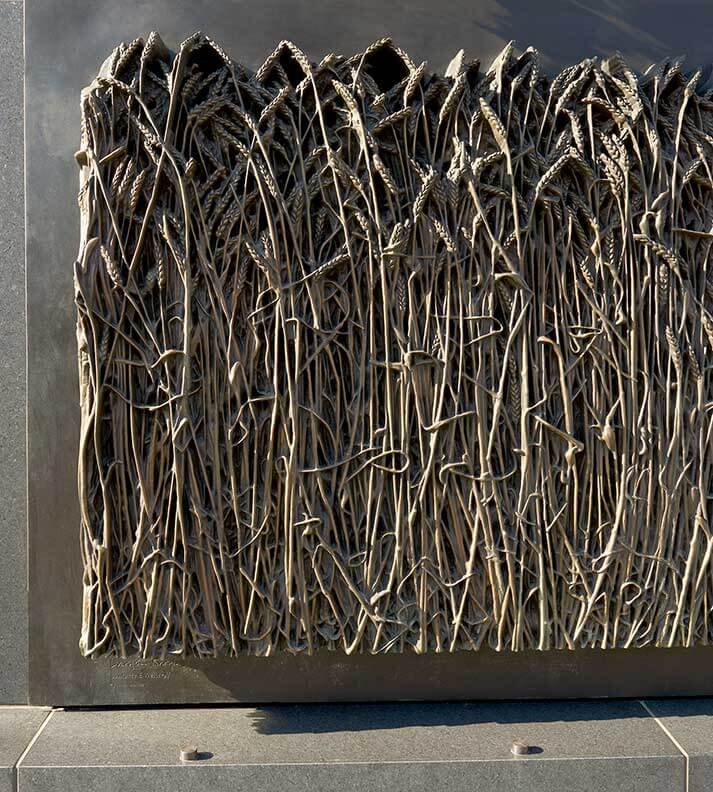- February 13, 2020
- By Sala Levin ’10
At a hectic intersection near Washington, D.C.’s Union Station, a small, triangular patch of land marks a solemn spot. Here, stalks of wheat—cast from bronze—quietly invite passersby to consider a little-known yet vast tragedy an ocean away.
This memorial to the 1932–33 engineered famine known as the Holodomor—a combination of the Ukrainian words for “hunger” and “extermination”—is the centerpiece of a new exhibit at the School of Architecture, Planning and Preservation’s Kibel Gallery. The 30-foot-long sculpture, designed by Larysa Kurylas ’80, will frame discussions exploring the role of public memorials and how they can be used to process loss and trauma.
“It has to communicate to viewers. Otherwise, it fails,” Kurylas said of her memorial. “I hope people have an emotional response.”
 Joseph Stalin orchestrated the Holodomor to punish Ukrainians for resisting Soviet rule. Beginning in the late 1920s, he seized private land and forced collectivized farming on Ukraine—known for its fertile soil and abundant wheat—to feed the rest of the Soviet Union and to sell on foreign markets to industrialize the country. In 1932, unachievable grain quotas were imposed, Ukrainians rebelled, and Soviet authorities began withholding food and confiscating anything edible, even pets. Ultimately, at least 3.9 million people died.
Joseph Stalin orchestrated the Holodomor to punish Ukrainians for resisting Soviet rule. Beginning in the late 1920s, he seized private land and forced collectivized farming on Ukraine—known for its fertile soil and abundant wheat—to feed the rest of the Soviet Union and to sell on foreign markets to industrialize the country. In 1932, unachievable grain quotas were imposed, Ukrainians rebelled, and Soviet authorities began withholding food and confiscating anything edible, even pets. Ultimately, at least 3.9 million people died.
After decades of mobilization by the Ukrainian American community, the U.S. Congress approved a memorial in 2006, and Kurylas felt “practically duty-bound” to submit a design. Born to Ukrainian parents who immigrated to the U.S. in 1951, she grew up speaking the language at home and going to Ukrainian school on Saturdays, learning from a teacher who survived the Holodomor.
Kurylas’ memorial highlights the wheat, whose stalks start out well-defined and over the length of the wall disappear and recede into the sculpture’s negative space, meant to express loss of life as well as “the artificiality of the famine,” she said.
The exhibit, curated by architecture Professor Ronit Eisenbach and on display through July, aims to “better understand the process by which a piece of public artwork comes into existence in places like D.C.,” said Brian Kelly, professor and director of the architecture program.
For Kurylas, the monument serves as a reminder not only of lives lost but also the danger of misinformation and suppression of facts, a theme that remains relevant today. During Ukraine’s Soviet era, discussion of the Holodomor was banned, and the government altered statistics to hide the famine. “The effects of this are long-lasting, and so are the effects of disinformation and misinformation,” Kurylas said.
